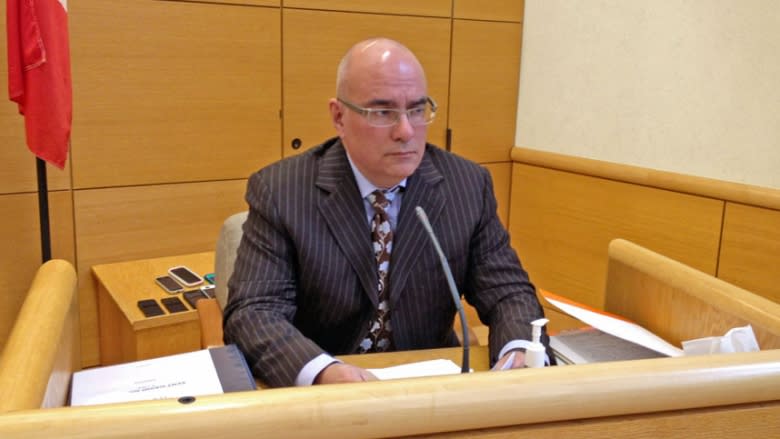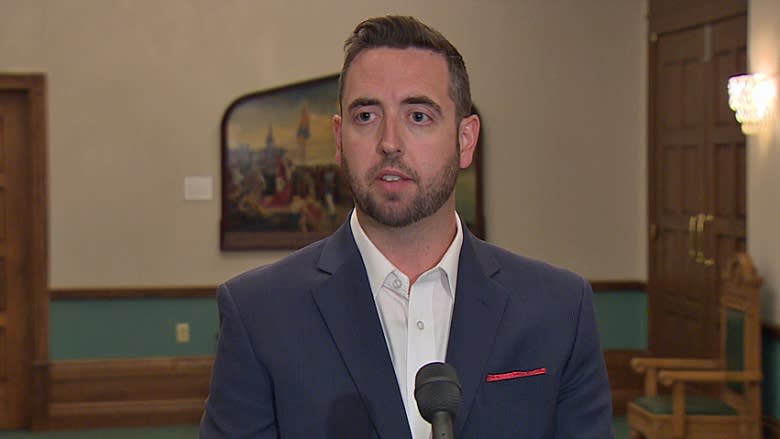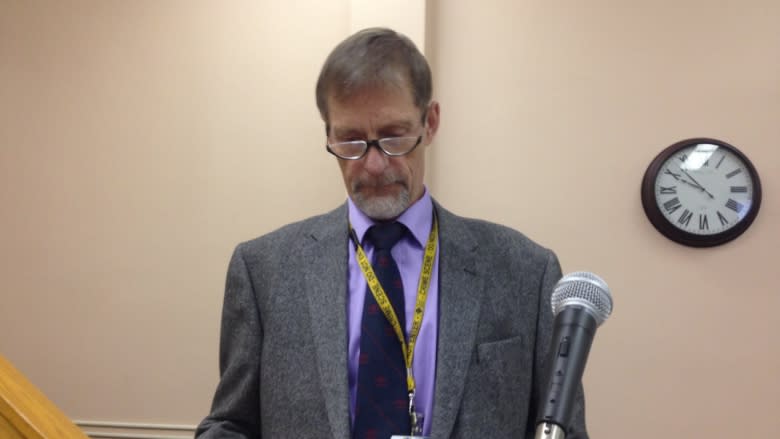'Important deficiencies' in chief medical examiner's office need to be fixed, review finds
A report into the state of Newfoundland and Labrador's chief medical examiner's office has found a litany of problems that need to be addressed.
"The physical infrastructure, equipment, information management system and staffing levels of [the office] have important deficiencies," noted the report, written by Nova Scotia's chief medical examiner, Dr. Matthew Bowes.
Bowes called for an infusion of resources into the office, to help overworked staff do their jobs.
Newfoundland and Labrador chief medical examiner Dr. Simon Avis told CBC News by email that "the major deficiencies identified and the recommendations they generated are not new."
He indicated that these shortfalls were known about years ago, and a prior review dating back to 2014 was scuttled due to budget cuts.
Justice and Public Safety Minister Andrew Parsons launched the Bowes review in early 2016, after a CBC News investigation revealed new details on how evidence was lost in a Labrador alleged murder case.
The brain of four-month-old Matthew Rich, who died in 2013 of head injuries, is believed to have been thrown out with medical waste. Charges against his father were subsequently dropped in late 2015.
On Friday afternoon, Parsons told reporters "it's quite clear that the system failed this child and the system failed this family."
Parsons noted that adding infrastructure and staff could cost millions, and wouldn't commit to implementing all of the recommendations in the report.
"I can't say that for sure, but the status quo as identified by Dr. Bowes is not an option," the minister said. "Change needs to happen."
He indicated that other government agencies would be involved in next steps, including Eastern Health.
And he pointed towards inaction by past governments as a root cause for the current problems.
"We have inadequate staffing, inadequate facilities, inadequate policies and inadequate procedures," Parsons said.
"A lot of this came down to ... in many ways, it had to have been ignored."
Infrastructure, staffing changes needed: report
Bowes concluded that there are too few people working in the office of the chief medical examiner (OCME), they are overworked, and they don't have the proper space and equipment to do their jobs.
"For OCME to best serve the people of Newfoundland and Labrador, it must be able to investigate deaths thoroughly and consistently, move and examine bodies and human tissue with care, document its activities and findings clearly and transparently, and communicate these findings clearly and confidentially to various stakeholders," Bowes wrote.
"To accomplish this, OCME must have personnel who are well-trained and adequately supported, working in a system that is designed to reduce the possibility and impact of human error."
According to the report, the office, which is located in the basement of the Health Sciences Centre in St. John's, is not able to keep up with demands.
Among the infrastructure-related concerns identified by Bowes:
- The office does not have a security system and visitors had "unfettered access to the facility," which the report says opens up the possibility of "theft or tampering."
- The mortuary freezer door did not shut property and the lock did not work.
- The type of storage containers for storage tissue from autopsies are "identical" to the ones used by the hospital — "the proximity of the two types of tissue is worrisome," the report noted.
- The room where forensic autopsies are done is too small: "There are very few surfaces upon which to write notes or keep any of the small items that a forensic autopsy requires. This is especially noteworthy given the nature of OCME's work: the forensic autopsy is routinely attended by up to three police officers, as well as the pathologist and his or her assistant."
And Bowes also highlighted personnel challenges, noting that chief medical examiner Dr. Simon Avis and the other members of the OCME team "are to be commended for their dedication, but the current professional and administrative workload is not sustainable."
The report noted that Avis is on call every day unless his shift can be covered by Dr. Nash Denic, a forensic pathologist at Eastern Health.
"Remarkably, he is the first point of contact for all or nearly all deaths that occur while he is on-call," the report said. "This is a highly unusual feature of a medical examiner system."
Bowes recommended that there be two full-time forensic pathologists, and three new permanent medical examiner investigator positions should also be created and filled.
He also recommended that succession planning should begin, for jobs that may be difficult to fill.
Last November, Bowes told reporters his initial reaction to the office is that it's understaffed, with just three staff members. For comparison, the office in Halifax has 24 employees.
Problems previously flagged
Avis told CBC News that his office "has discussed with successive governments the very same issues."
Those include the need for additional forensic pathologists, a dedicated unit separate unto itself, and the development of in-house investigators.
"As recently as 2014 the Department of Justice acknowledged these shortfalls and started a review process into the various components initially with an environmental scan of other jurisdictions and preparation of budget notes," Avis said by email.
"Unfortunately the price of oil dropped, the province faced a budgetary crunch and the process ended."
Avis said he is "pleased that an independent review process has reaffirmed these recommendations," and looks forward to working with the department to implement them.
Status quo not seen as option
Bowes, meanwhile, stressed that a new facility is necessary.
"We wish to make clear that we do not view the status quo as an option," the report noted.
The report did acknowledge that some changes were implemented in response to the Matthew Rich case.
Those new policies and procedures are "a welcome start."
Bowes hopes the report provides "a clear road map for the way forward" — a road map that would reduce the risk of repeat problems.
"Many of the recommendations already made in this report will, if implemented, mitigate the risk of this error occurring again," he wrote.




